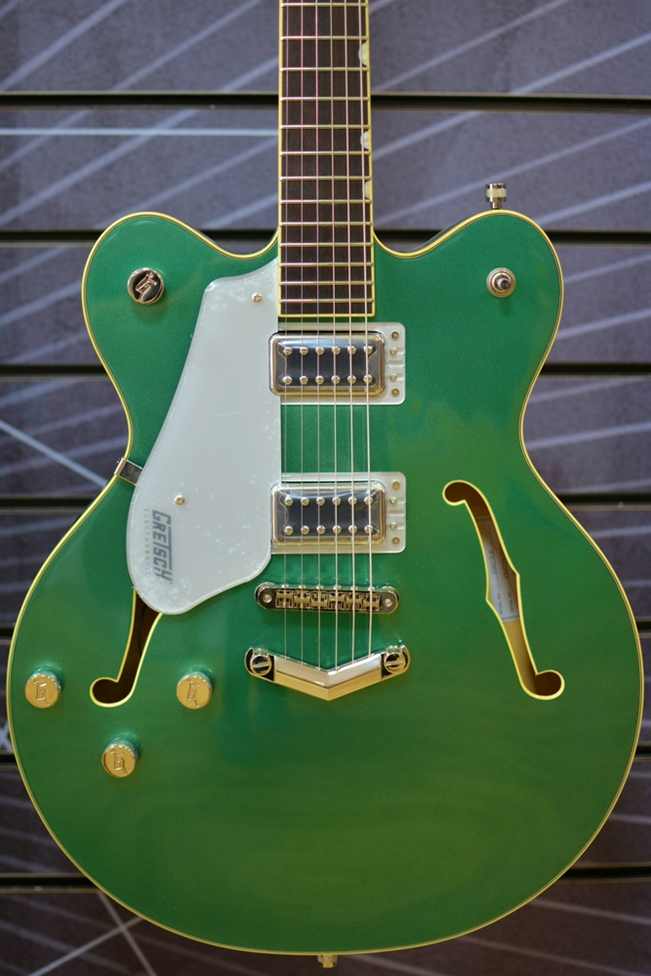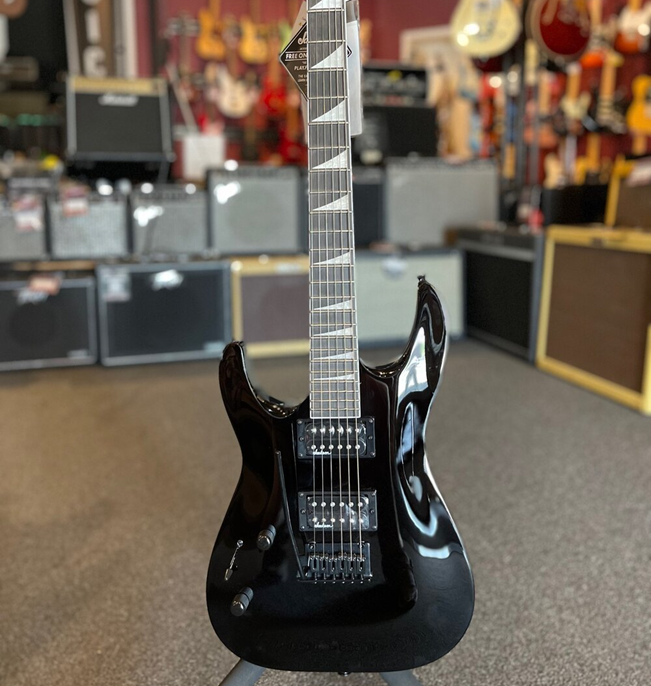The guitar is one of the most popular instruments and guitar designs come in both left- and right-handed varieties, so you can choose based on your preferences or comfort while playing the instrument. If you’re a leftie, then you know already that the world revolves around right-handers. And if you’re an electric guitar player, then you surely know it very well. So, what are the options left-handed guitar players have but restringing a guitar or buying a left-handed one? To help you out, here are a few thoughts.
The Difference between Left-Handed and Right-Handed Electric Guitars

The guitar is a reasonably symmetrical-looking instrument, so it’s easy to assume that as a leftie you can just turn a right-handed guitar upside down and play it more comfortably. But, the truth is that it’s not that simple, so it’s always a better idea to browse left-handed electric guitars and find the right one for you. The following are some of the differences between left- and right-handed guitars.
The Strings
The main difference is in the size of the strings. On a left-handed guitar, the low E string, the thickest one, is the one furthest to the right, while on a right-handed one, it is the first string on the left. On a left-handed guitar, everything is opposite from a right-handed one, so you can strum with the dominant hand and finger chords with the right hand. Strumming and picking with your dominant hand can make for smoother-sounding music and take your guitar-playing experience to a whole new level.
A left-handed guitar also reverses the placement of features such as volume and tone controls, switches, pickups and tremolo bars allowing lefties to be able to easily access them to lend more colour to their playing. The guitar pedal is another aspect to consider, as usually the setting goes right to left, though you can set it up left to right if you invest in long patch cables.
The Pickguard
Many electric guitars have pickguards. The pickguard rests under the sound hole and protects the instrument from getting scratched by strumming. If you turn a right-handed guitar upside down, then this guitar piece would rest above the hole and will not be very useful.
The Strap Peg
On a right-handed guitar, the strap peg is above the neck. If you flip it, the strap would be under the fretboard, making it difficult to play. On a left-handed guitar, the strap peg rests above the fretboards, so you can attach a guitar strap without interfering with the strings.
How to Choose the Right Left-Handed Guitar for You
Learning to play with a left-handed guitar allows you to work with what you’ve got, but keep in mind that instruments made specifically for left-handed people can be more expensive because there is less demand for them. Additionally, it can make finding the right one more difficult, so here are a few tips that may help.
Consider Your Budget First
To begin with, think about how serious you are about your playing and how much you can spend on a new guitar. As mentioned above, left-handed guitars can be more expensive than right-handed ones, but still, they are available at a wide range of prices. And as with any other instrument, if you have some specific demands, be prepared to pay a bit extra.
Consider the Brand
For many, the brand plays a big role, and for a good reason. Many well-known guitar brands are famous because they offer premium quality products that are generally a good choice. Also, many of them offer carefully designed products, so you can easily find a left-handed guitar for sale that meets your needs and preferences.
Consider the Design & Features
Choose a reliable retailer and make sure the models you’re looking at are designed with lefties in mind. Check out different left-handed guitars and choose the guitar body and model carefully. Also, consider the type of pickups you want in your instrument as they can influence how the guitar sounds when plugged into an amp.
Final Thoughts

If you’re a left-handed guitarist, remember that many famous musicians have walked the road you’re on. Today, you can find a wide range of left-handed electric guitars to choose from. Jimi Hendrix couldn’t, so he chose to flip a right-handed guitar and play his instrument. Tony Iommi and Paul McCartney did the same, so they could pick with their dominant hand.
Gary Moore and David Bowie, although they were lefties, learned to play right-handed, and it worked well for them. It’s not easy though, but it’s possible. Kurt Cobain played drums right-handed, but when it came to guitar, he played it with his left hand. He flipped several right-handed guitars until he got Fender to design a left-handed one just for him.
For some lefties, it’s easier to use the dominant hand to finger chords, while for others it’s easier to fret or strum with their dominant hand. Go with whatever is easier for you and remember that practice is what makes perfect in the long run. Even though guitar instruction has been a very right-hand-centred, the good news is that there are left-handed training materials. You can buy resources made specifically for left-handed guitar players and make the most of your experience. Sit down with your guitar, keep your back straight, your feet on the floor and get a comfortable grip on the pick.
























